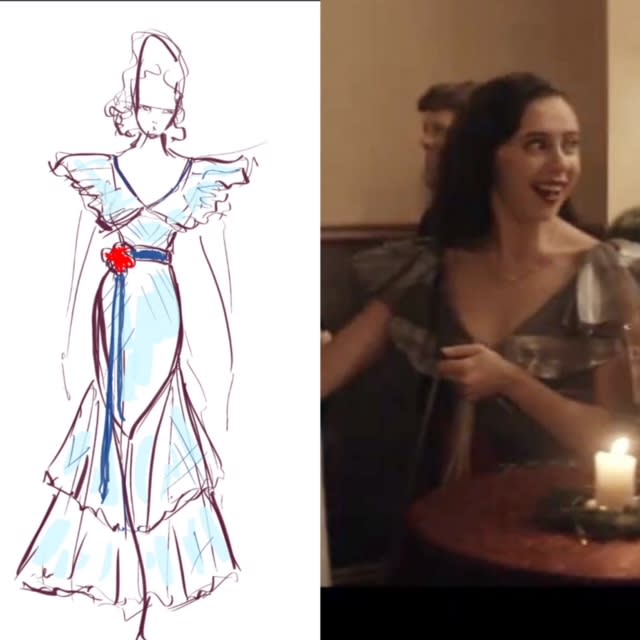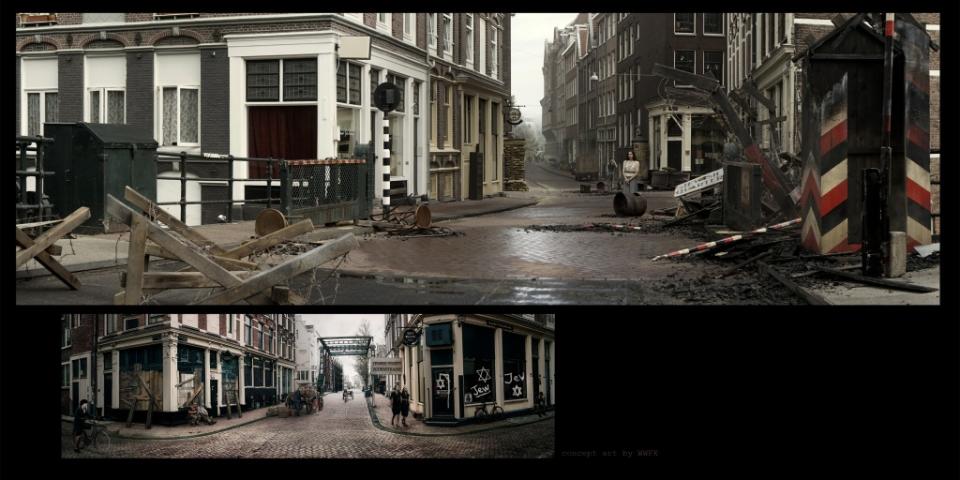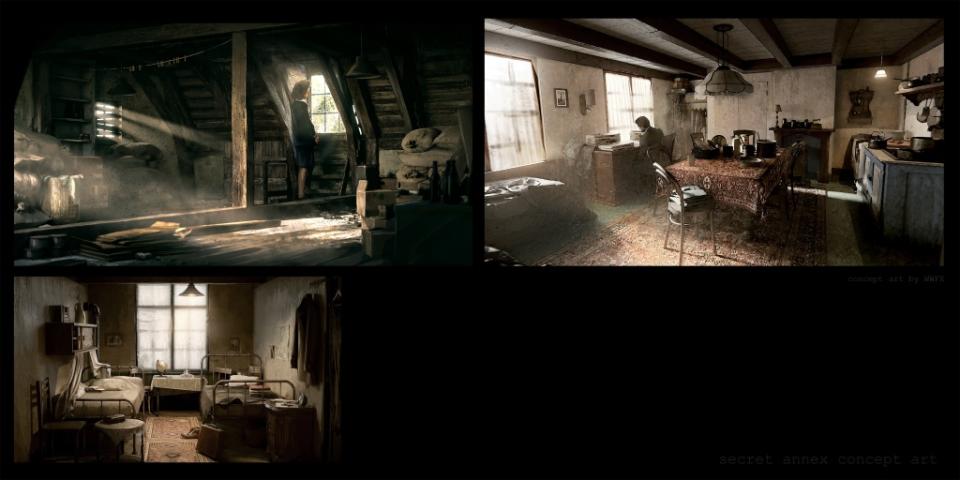How ‘A Small Light’ Artisans Captured Hope and Resilience Through Costumes, Music and Production Design

National Geographic’s “A Small Light” takes the well known story of Anne Frank, the Jewish teenager who hid in a cramped Amsterdam attic with her family during the Nazi occupation, and presents it though a new lens.
The narrative focuses on a tenacious young woman, Miep Gies (Bel Powley), Otto Frank’s secretary, who risked everything to save the Frank family and many others. While the story centers around the horrors of World War II, the story finds resilience and hope through it all.
More from Variety
Here the artisans behind the limited series break down how their respective crafts reflect hope, resilience and the atrocities of war.
Costume design
Costume designer Matthew Simonelli wanted to pay respect to the period and region. “It had to feel 1942, but that it was taking place in Amsterdam,” Simonelli says.
The Amsterdam Museum‘s exhibit on wartime fashion was his biggest guide where he was able to access clothing from the era. He adds, “I looked at what kids in Williamsburg or London were wearing, just to find places where they overlapped, and that’s the world I tried to live in with Bel.”
With Bel’s Miep at the centerpiece, it was important to begin there and get her color palette right. Simonelli worked closely with production designer Marc Homes. Says Simonelli, “We agreed that greens were the color of safety and red was for tension.” Once that was established, Simonelli infused a lot of neutrals into the background, but “I wanted to make sure Miep was punching forward in colors.”
He also turned to Gies’ book “Anne Frank Remembered,” in which Gies wrote about her love for fashion and color.
Simonelli’s biggest challenge was finding fabrics that looked and draped like they were period-accurate to the 1940s. “Everything was rayon crepe, and there’s nothing else like it. It drapes and swings beautifully, but you can’t find it,” he says.
He perused junk shops and private vendors and bought larger sizes from Etsy, “so I’d have fabric. I’d recut it and reshape it that gave me the movement that I liked.”

Production Design

Production designer Marc Holmes approached his sets knowing that the Dutch were very forward-thinking architecturally. The exteriors tended to feature lots of colors, draining color and the return of color which reflected life before the war, during the war and the Nazi invasion, and later, hope, freedom and resilience.
And while he used plenty of color for the early episode, he explains when it came to the Frank family hiding in the annex, “They never saw the sun, their skin was pale, and their clothes got old, so we removed color. The annex also gets dirtier as things get worn down. The color drains out of that room and palette.”
However, by the end when the Allies come to free the Dutch, there’s another shift. He says, “The color explodes back. Particularly orange, red, white and blue, which are the colors of the Dutch flag.” He did that to reflect hope and “was a simple way of reintroducing color.”
In the first three episodes, Miep is at her stepparents’ home where Holmes could use “muted oranges and greens in a comfortable environment.”
Holmes used the warm safe colors in other sets too. He says, “We followed that warmth through to the Social Security offices. There are subtle uses of orange, warm woods and burnt oranges, but it all felt safe.”

Score
Composer Ariel Marx wanted a contemporary sound, but not overly so, that it took audiences out of the period. She says, “It’s still very respectful to World War II and the late ‘30s and ‘40s, but I wanted to make it as relatable as possible.”
Miep’s character, Marx says, was a modern woman for her time. She wasn’t married, she didn’t have a solid job and she was still living with her family. Says Marx, “She is a hero and was so humble, but I didn’t want to paint her in an overly heroic way. Her sound palette draws from 1930s jazz, Belgian jazz guitarist Django Reinhardt as well as Tom Waits and Andrew Bird.”
In establishing Miep’s sonic feel, the composer set about establishing life before the war. “There’s love, sex, joy and romance. So the music articulates that joy. As the series progresses and Miep makes bigger and more consequential decisions, the music becomes sophisticated.”
The music evolves and becomes more electronic and classical and less jazz and folk. Marx incorporates darker electronics and the tension aesthetic starts to sound contemporary. She explains, “It was done very intentionally to make those sequences feel like that was happening right outside your door in 2023.”
Marx’s most challenging episode when the Van Pels family, the Franks, as well as Fritz Pfeffer, are taken into custody by the Nazis. “That was wall-to-wall music,” says Marx. “And it was all done in real time.”
However, by the series finale, a semblance of hope and Miep’s resilience returns. Marx returned to the musical aesthetic of episodes one and two. She explains, “When Otto returns, there’s the dynamic of what it was like before the way and so a lot of the earlier original themes return.”
Best of Variety
Sign up for Variety’s Newsletter. For the latest news, follow us on Facebook, Twitter, and Instagram.
